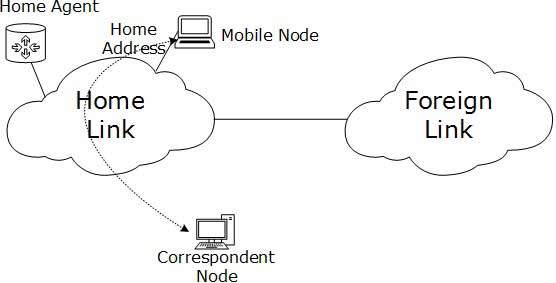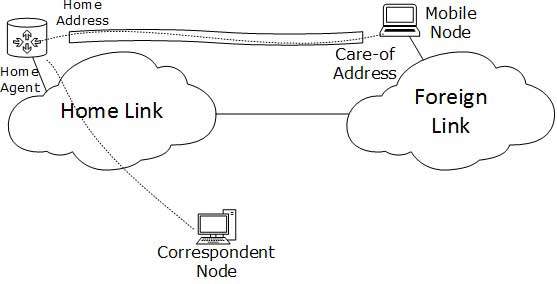When we connect a terminal to the network, it will get an IP address and all the communication will be based on that particular IP address.
When the terminal changes its physical position , then the IP address associated to that changes accordingly.
IPv6 mobility provides a mechanism for the host to roam around different links without losing any communication/connection and its IP address.
Multiple entities are involved in this technology:
-
Care-of Address: When a Mobile Node gets attached to a Foreign Link, it acquires a new IP address of that Foreign Link’s subnet. Home Agent maintains the information of both Home Address and Care-of Address. Multiple Care-of addresses can be assigned to a Mobile Node, but at any instance, only one Care-of Address has binding with the Home Address.
Mobility Operation
When Mobile Node stays in its Home Link, all communications take place on its Home Address as shown below:

When a Mobile Node leaves its Home Link and is connected to some Foreign Link, the Mobility feature of IPv6 comes into play. After getting connected to a Foreign Link, the Mobile Node acquires an IPv6 address from the Foreign Link. This address is called Care-of Address.
The Mobile Node sends a binding request to its Home Agent with the new Care-of Address. The Home Agent binds the Mobile Node’s Home Address with the Care-of Address, establishing a Tunnel between both.
Whenever a Correspondent Node tries to establish connection with the Mobile Node (on its Home Address), the Home Agent intercepts the packet and forwards to Mobile Node’s Care-of Address over the Tunnel which was already established.

0 Comment(s)